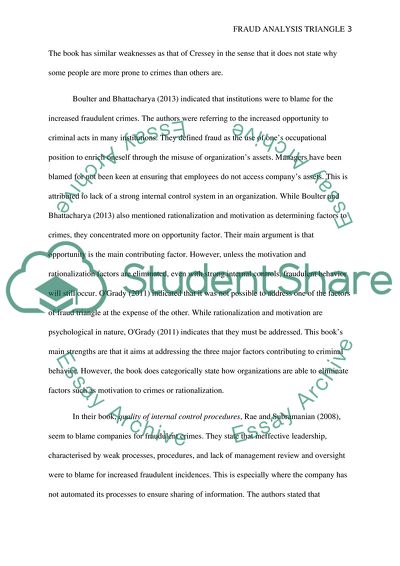Cite this document
(The Theory of the Fraud Triangle Report Example | Topics and Well Written Essays - 1250 words - 1, n.d.)
The Theory of the Fraud Triangle Report Example | Topics and Well Written Essays - 1250 words - 1. https://studentshare.org/psychology/1868946-fraud-analysis-triangle
The Theory of the Fraud Triangle Report Example | Topics and Well Written Essays - 1250 words - 1. https://studentshare.org/psychology/1868946-fraud-analysis-triangle
(The Theory of the Fraud Triangle Report Example | Topics and Well Written Essays - 1250 Words - 1)
The Theory of the Fraud Triangle Report Example | Topics and Well Written Essays - 1250 Words - 1. https://studentshare.org/psychology/1868946-fraud-analysis-triangle.
The Theory of the Fraud Triangle Report Example | Topics and Well Written Essays - 1250 Words - 1. https://studentshare.org/psychology/1868946-fraud-analysis-triangle.
“The Theory of the Fraud Triangle Report Example | Topics and Well Written Essays - 1250 Words - 1”. https://studentshare.org/psychology/1868946-fraud-analysis-triangle.


